Montana's Magnificent Buffalo Jumps
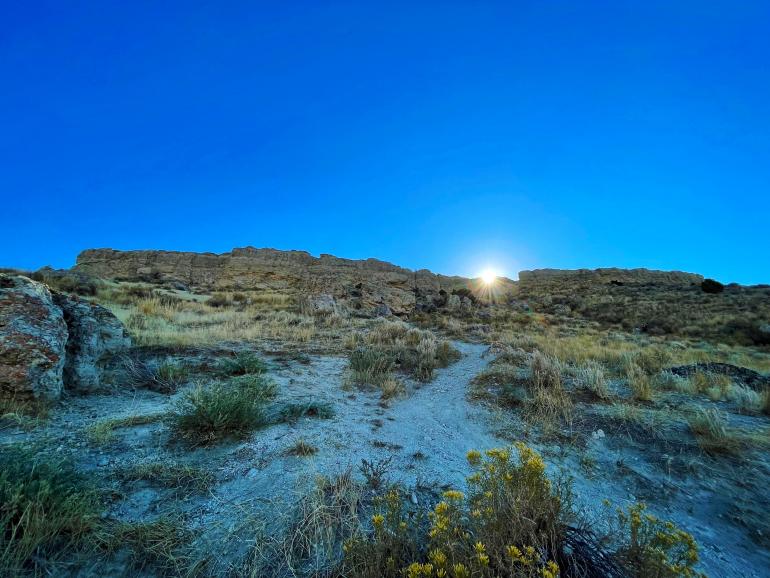
Photo by Holly Matkin
Indigenous Peoples’ Key to Survival on the Unforgiving Plains
The faint, pastel glow of the sunrise seems to creep in earlier over the wide-open plains covering the eastern two-thirds of Big Sky Country than it does over the neighboring mountain towns to the west. Out on the prairie, the land stretches on to the far-off horizon, meeting the new day as it breaks over the edge of the earth without mountains or towering trees to obscure its spectacular glory.
You’d be hard-pressed to witness a landscape as replete with intrinsic beauty as the endless patchwork of fields and rolling grasslands that comprise Montana’s flatlands. Prickly cacti, scatterings of bright wildflowers, herds of grazing antelope, and the occasional dust devil accentuate the boundless panorama as hawks soar gracefully overhead. Buttes jut up from the earth, starkly silhouetted against the bold, blue skies, while sediment-laden rivers continue cutting their long-established paths through the soil.
It doesn’t take much imagination to envision what this land must have looked like to the indigenous people who first lived upon it. Although much has changed since that time, many aspects of the untamed prairie remain intact.
Despite its romantic, innate beauty, life on the open flatlands was unquestionably harsh and unforgiving. To survive on the vast, sagebrush-spotted plains meant Montana’s native peoples had to find ways to shield themselves from the unrelenting wind, violent thunderstorms, towering snowdrifts, and the sun’s blistering rays. It meant sidestepping rattlesnakes, staying alert for predators and potential enemies, and recognizing the danger of a swiftly flowing river. Perhaps above all, survival on the wide-open prairie hinged on the tribe’s ability to find food.
And if foraging and hunting were key to ensuring their continued existence, then the bison was their lifeblood.
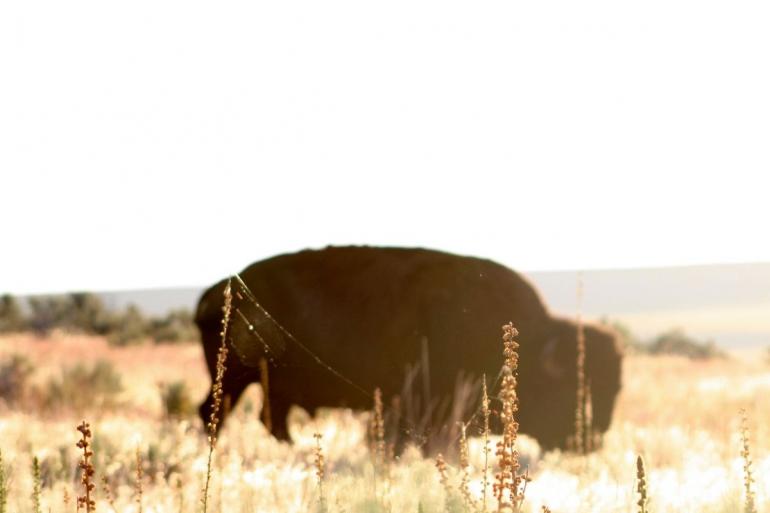
The Contribution of the Bison
The North American prairies were once home to as many as 30 million bison, which roamed in herds numbering between 25 and 300. Although many people mistakenly use the terms “bison” and “buffalo” interchangeably, they are actually two distinctly different animals. In fact, early explorers inaccurately referred to North American bison as “buffalo” because they somewhat resemble the water buffalo and cape buffalo they had seen in Asia and Africa.
Montana’s native tribes relied on the bounty of bison in nearly every aspect of their daily lives. In addition to depending on them as a primary food source, native peoples also developed ingenious methods that enabled them to use every part of these colossal one-ton giants.
Bison brains were used to help prepare hides, their dung fueled campfires, their bones became sewing needles and tools, and their horns were carved and molded into cups, ladles and spoons. Bison tails were used as flyswatters, their skulls were incorporated into prayers and ceremonies, and their tendons were dried into sinew to be used as sewing thread, string, and bowstrings.
Bison rawhide was fashioned into a wide variety of useful goods, including containers, moccasins, drums, clothing, and tipi coverings. Most tipis required between 12 and 18 hides, which ordinarily held up for about one year.
The native tribes’ lives were so intertwined with those of these massive, shaggy beasts that they developed deep understanding of the animals’ migratory patterns and habits. Native peoples situated themselves in areas where they could work with the land to help aid them in successfully pulling off communal bison hunts.
After all, slaying a 2,000-pound animal capable of moving 35 miles per hour without the benefit of horses or modern-day weapons certainly wasn’t for the faint of heart.
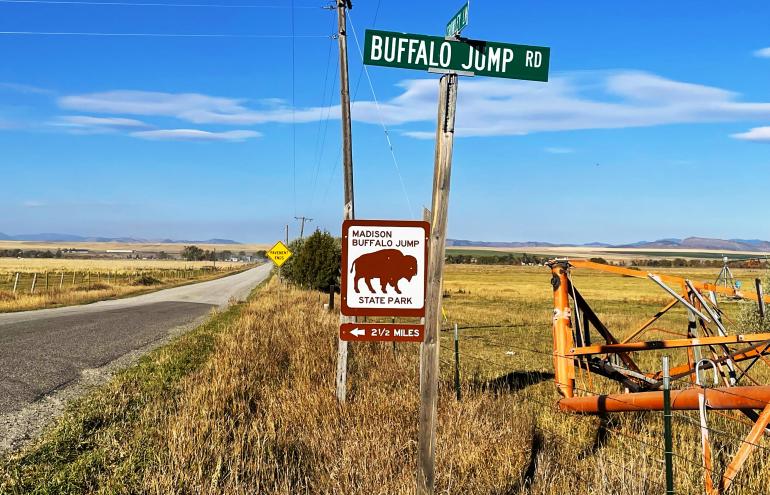
At the Madison Buffalo Jump. Photo by Holly Matkin.
The Ingenuity of the Buffalo Jump
For thousands of years, brilliant native hunters utilized the land’s natural features and their spiritual connection with bison herds to develop highly-effective mass kill sites known today as “buffalo jumps.” These areas generally consist of a high, grassy meadow with an abrupt cliff bordering at least one side.
After purifying himself in a sweat lodge, a highly-skilled young hunter known as a “runner” would drape himself with the skin of a bison calf and slink off into the herd, mingling with the massive beasts as if he was one of their own.
He would then use his extensive understanding of bison behavior to mimic the movement and sounds of a calf in distress, drawing the attention of the herd’s leader. Once the concerned herd matriarch began following him, the rest of the group would soon follow suit. As the runner gradually lured the herd toward the cliff, additional runners – often dressed in wolf skins – would close in behind the group.
Alexander Henry, a fur trader who witnessed a buffalo drive in 1776, wrote about the native peoples’ astounding skills after watching them in action. “The Indians’ gestures so closely resembled those of the animals that if I had not been in the secret, I would have been as deceived as the buffalo,” he wrote, according to a Madison Buffalo Jump State Park interpretive plaque.
The hunters would gradually haze the group closer and closer to the cliff, funneling them toward the abrupt edge using drive lines constructed from strategically-placed piles of stones. As the lead runner reached the V-shaped drive lines, he would break into a sprint, causing the heard behind him to run after him. The runners pushing the group from behind also contributed to the quickening pace.
Before long, the alarmed herd would be thundering across the ground, traveling in such a dense mass that only the leaders of the group could see the bluff quickly approaching. The rest of the herd, unable to see the danger, followed the leaders blindly and ran even harder to keep up with them. By the time they reached the edge of the cliff, there was no stopping the powerful momentum that had been created by the stampede.
The native runner tasked with luring the group would either dodge out of the way at the last possible moment or would jump over the cliff’s edge himself before taking refuge on a pre-selected outcropping or a crack in the wall as the bodies of the frenzied herd soared over him and plummeted to the ground below. Despite their athleticism and skill, native runners did not always reach their intended safety point.
Many of the falling bison died upon impact, while others were dispatched by hunters waiting at the base of the cliff. Native peoples also generally constructed wooden corrals made of tightly-woven branches and twigs to contain surviving members of the herd until the hunters reached them.
Much of the butchering and processing tasks were handled by women. They hacked thousands of pounds of meat into chunks and moved them to campsites either on their backs or with a dog travois, then got to work cooking, preserving, and converting the bison into essential tools and supplies.
Native peoples burned the remaining carcasses before departing the area for the season.
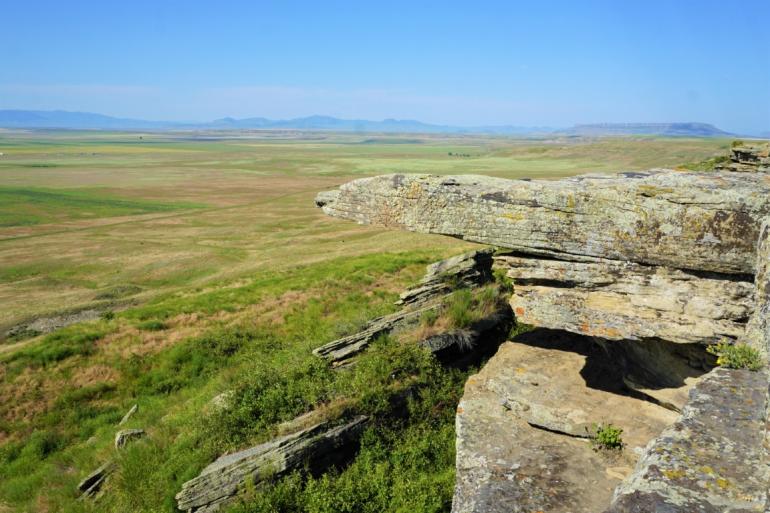
First People's Buffalo Jump. Photo by Holly Matkin.
Step Back in Time
Present-day Montana is home to approximately 300 buffalo jump sites. Many of the jumps were utilized for thousands of years up until the 18th century, when European settlers and explorers introduced horses to the area and altered hunting practices forever.
Three of those sacred sites are now protected and listed on the National Register of Historic Places.
First Peoples Buffalo Jump State Park
This mile-long sandstone cliff, located near Great Falls, is believed to be the largest buffalo jump site in North America. The cliff drop ranges between 30 and 50 feet, and an estimated 18 feet of bison bones are still compacted at its base.
The archeological site is part of a 1,481-acre park and is accessible via a 3.5-mile hike. Take in stunning panoramic views of the Missouri River Valley, the Rocky Mountain Front, the Highwood Mountains, the Big Belt Mountains, and the Little Belt Mountains from the top.
Visitors have the opportunity to see pictographs, remnants of drive lines and sweat lodges, and a black-tailed prairie dog town. This site also features a 6,000-square-foot visitor center filled with educational exhibits, traditional games, a storytelling circle, and a bookstore.
First People’s Buffalo Jump State Park, located at 432 Ulm-Vaughn Road, is a 20-minute drive from Great Falls and less than three miles northwest of Ulm.
Wahkpa Chu’gn Buffalo Jump
This site sits a short distance from the Bear Paw Mountains along the Milk River in north-central Montana. It was named in honor of the Assiniboine term for “Milk River.” Some consider it to be the best preserved and most extensive bison hunting ground bone deposit in the region.
The mass kill site is the first jump to ever be interpreted for the public. In features a 20-foot wall of bison bones preserved exactly as archeologists uncovered them, as well as the remnants of a wooden bison corral. Roasting pits and stone boiling pits are also features of the one-hour guided tours at this site. Visitors can try their hand at throwing the traditional atlatl, which was used by the Besant peoples when they hunted the area.
Wahkpa Chu’gn Buffalo Jump is located on the west end of Havre, just behind the Holiday Village Shopping Center.
Madison Buffalo Jump
The 638-acre Madison Buffalo Jump Park features a spectacular, semicircular limestone cliff with views of the Madison River Valley from the plateau. Scattered arrowheads and bison bones remain buried at the base of the jump, and archeologists have uncovered tipi rings indicating the site was once home to an extensive village. The park has opportunities for hiking, photography, wildlife viewing, and much more.
Madison Buffalo Jump is located approximately 13 miles southeast of Three Forks and seven miles south of Logan.
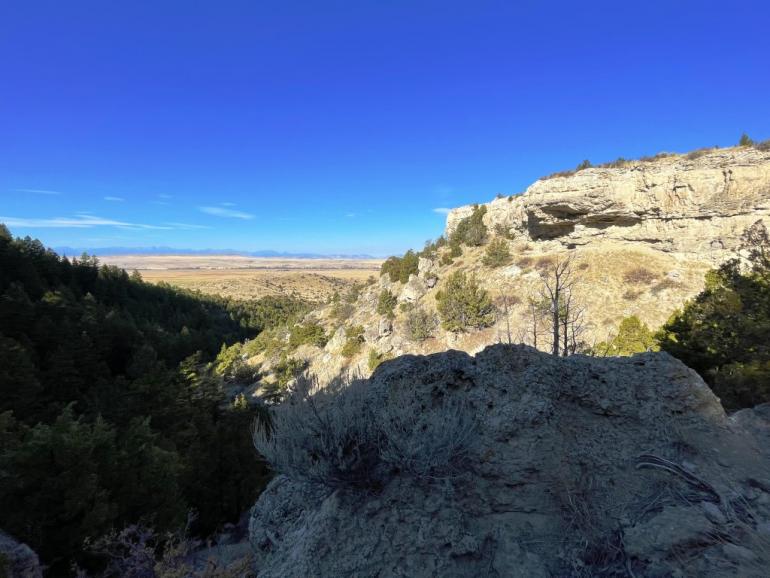
Madison Buffalo Jump. Photo by Holly Matkin.
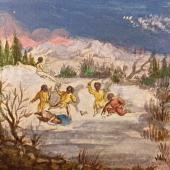
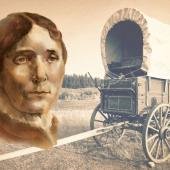
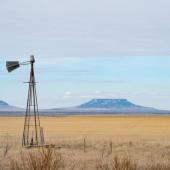


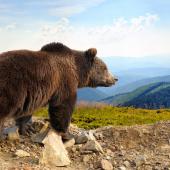
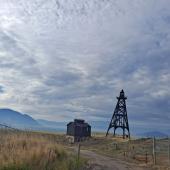



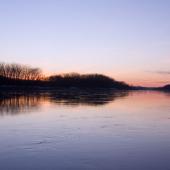
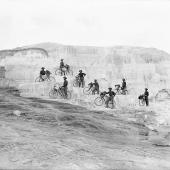
My favourite place on earth.
- Reply
Permalink